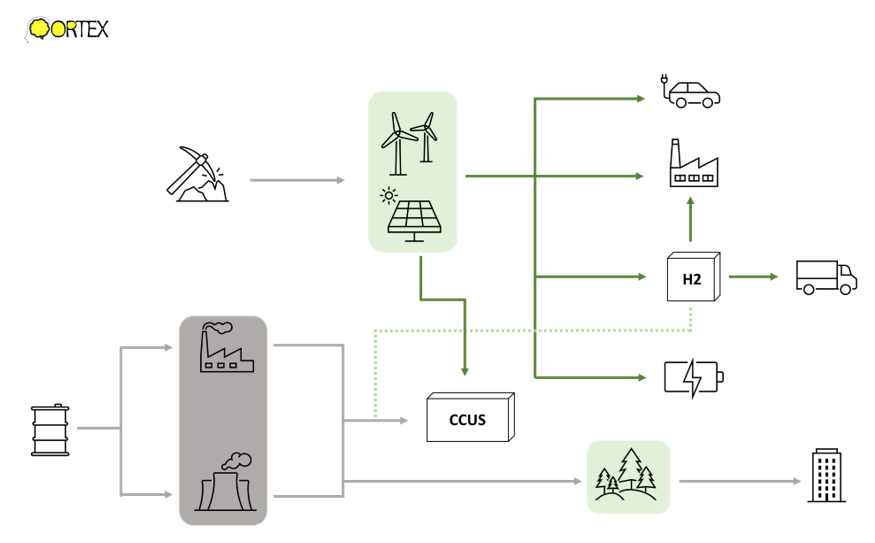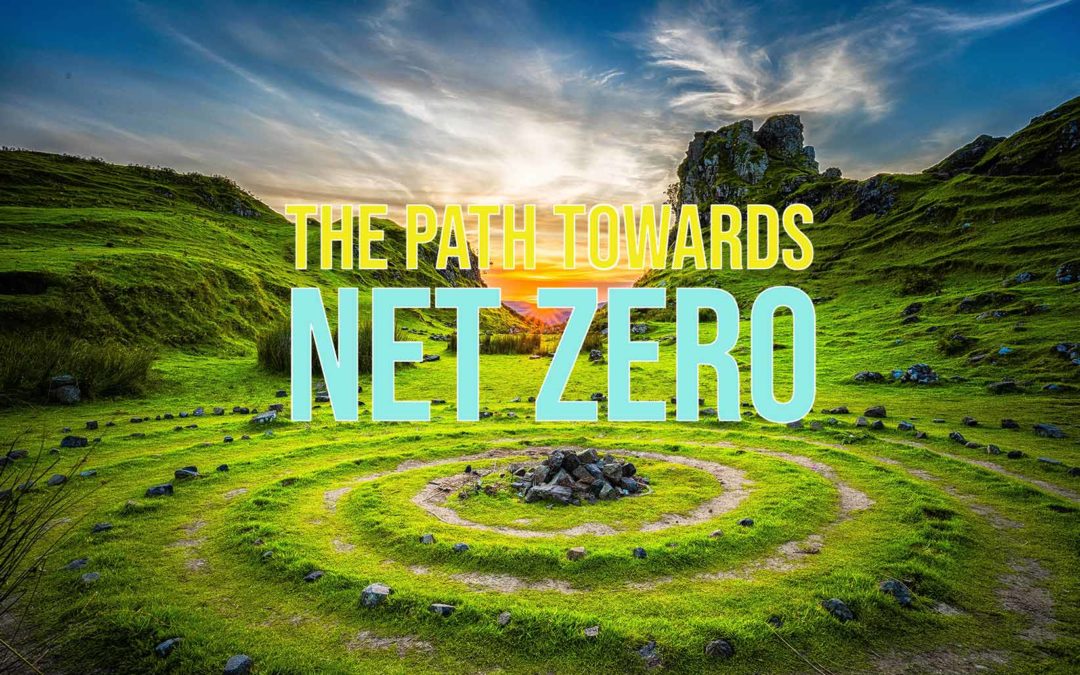Let us review humanity’s path towards climate neutrality and its economic consequences over the next decade.
Climate and natural resources are intimately connected, and we generally agree that we need to do two things:
- use resources more intelligently and parsimoniously and at the same time
- produce energy with a significantly lower environmental impact (primarily through lower GHG emissions).
The goals for 2030 and 2050 have broadly been defined and most large enterprises have pledged to reduce their environmental impacts significantly by then. Unfortunately, it is easier to sell a dream than to realise it. The path identified by society and now translated into official targets, such as in the EU’s REPowerEU plan, is the following
- Electrify fossil-based products and activities, such as internal combustion engine (ICE) vehicles and steelmaking.
- Increase renewable energy production capacity (solar, wind) and other technologies such as hydrogen (which in fact is not an energy source but rather an energy carrier).
- Increase and improve recycling, boosting the so-called circular economy.
- Improve the energy-efficiency of buildings, in particular with better insulation.
- Develop industrial-scale carbon capture utilisation and storage (CCUS).
- Rely on gas as a key transition fuel providing lower emissions than coal and oil.

European goals and numbers
The European Union has quantified its new goals for 2030 in terms of renewable energy: over 1’230 GW of installed renewable capacity by 2030, with ca. 600 GW in solar PV and 500 GW in Wind. Currently, we are around half that based on data from the International Renewable Energy Agency (IRENA). To put things into perspective, we will need ca. 50 GW of solar capacity added per year to 2030 and 40 GW of capacity were added in 2022. While 2022 was a record year, increase YoY in 2021 and 2022 were of ca. 50%, so that should be doable. For wind it is more challenging, as we need around 30 GW per year while we are only adding around 15 GW.
While not part of official REpowerEU targets, nature-based solutions such as carbon sequestration by forests play an important role in the strategy towards net-zero. The EU has a stated 2030 forest strategy in this context.
The economic impact
While this path towards climate neutrality will deliver growth in cleantech and other connected niches, the end result may be far from revolutionary, as certain existing, highly polluting sectors, will simply be able to continue with their operations, once having adjusted their production processes using renewable energy or carbon capture technology. In fact, carbon capture might be in a sense the anti-disruptor, as economically viable implementations (especially at high CO2 prices around 100 EUR/t) might delay the large-scale implementation of more disruptive technologies like hydrogen and keep fossil fuels in circulation for longer than expected.
the path towards net-zero is made of multiple technologies, at least for now. Ideally, we should aim for a fully renewable energy mix in the long-term. However, commercial, economic and political interests (to a certain extent justified) support a smooth transition, and it seems that carbon capture will be a reality. Carbon capture would allow fossil fuels to be used for longer, slowing down the growth rate of pure-play renewable businesses and increasing the value of more traditional energy businesses, especially when it comes to gas.
At the base of the pyramid, raw materials and in particular metals will play a strategic role in this journey. At the same time, all the technological advances in the area of hydrogen, carbon capture and batteries, will help incumbent polluting industries to survive and adapt, delivering similar products as they do today, but in a cleaner way. Hence, we will likely not be confronted with a revolution, but an evolutionary adaptation instead.

